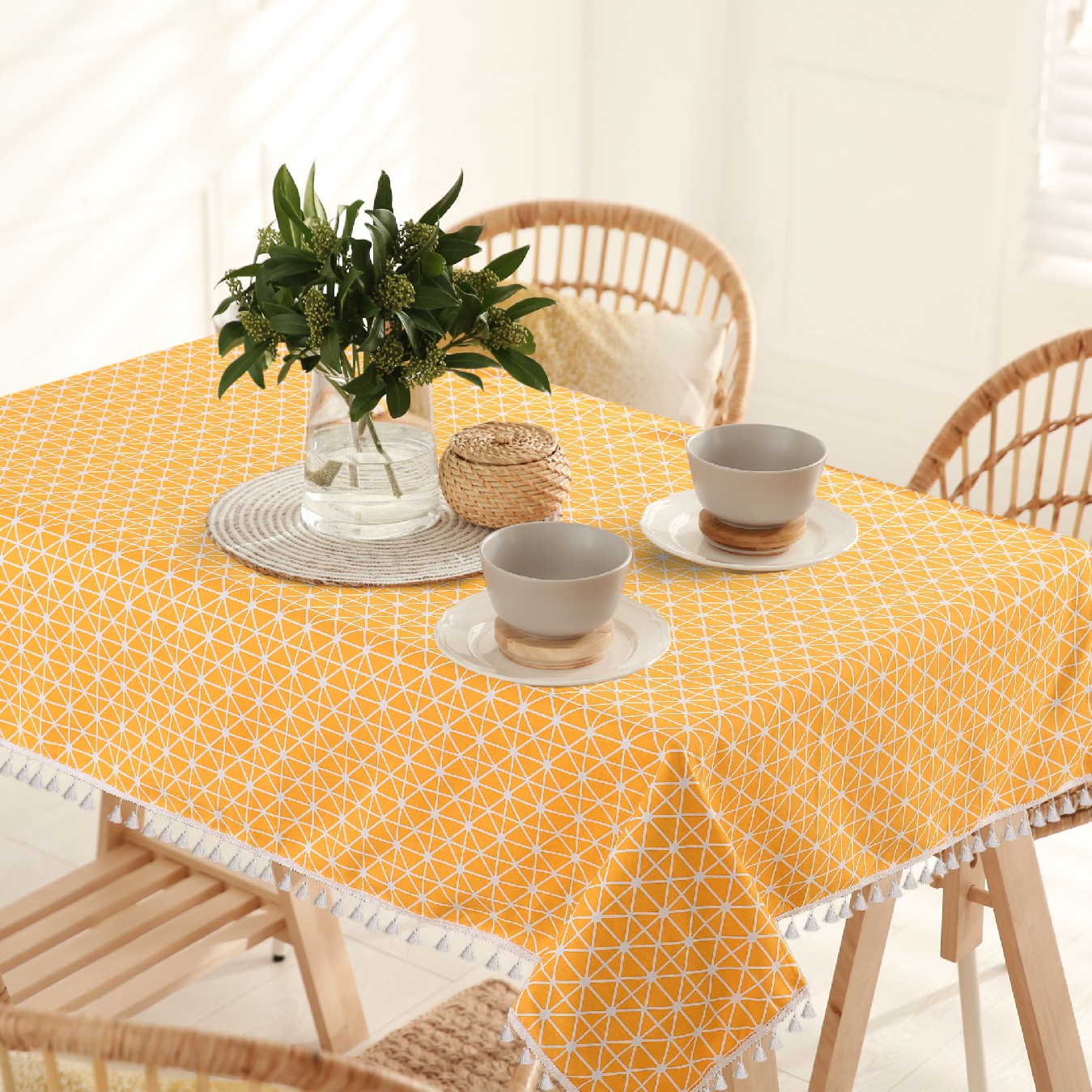Round Dining Table Covers

Introduction:
Dining tables have been central to human civilization since ancient times, evolving from simple surfaces for meals to sophisticated pieces of furniture that reflect cultural, social, and aesthetic values. Among the myriad of dining table shapes, the round table holds a special place, symbolizing equality, unity, and inclusivity. In this exploration, we'll navigate through the realms of round dining tables and their covers, from their origins to contemporary considerations.
Historical Evolution:
The history of dining tables dates back to ancient civilizations like Egypt, Greece, and Rome, where communal dining was a significant social activity. Early tables were rudimentary, often consisting of stone slabs or wooden planks supported by simple structures. With the progression of society, dining tables became more refined, evolving into elaborate pieces adorned with intricate carvings and embellishments.
The round table, in particular, gained prominence during the medieval period, symbolizing equality and fostering camaraderie among knights during Arthurian legend-inspired gatherings. King Arthur's legendary round table exemplified a democratic ethos, where every knight had an equal seat at the table, devoid of hierarchy or precedence.
Functional Considerations:
Choosing the right cover for a round dining table involves considering both functionality and aesthetics. Functionally, covers serve to protect the table surface from spills, scratches, and heat damage, prolonging its lifespan. Depending on the material, covers can also provide a cushioning effect, reducing noise and minimizing the impact of objects placed on the table.
When selecting a table cover, factors such as material, size, and design come into play. Common materials for table covers include cotton, linen, polyester, and vinyl, each offering unique characteristics in terms of durability, ease of cleaning, and aesthetic appeal. The size of the cover should correspond to the dimensions of the table, ensuring a snug fit without excessive overhang or stretching. As for design, covers are available in a plethora of styles, ranging from simple solid colors to intricate patterns and textures, allowing homeowners to complement their existing decor or make a bold statement.
Aesthetic Considerations:
Beyond functionality, table covers contribute to the overall aesthetic of the dining space, serving as a canvas for personal expression and stylistic preferences. The choice of color, pattern, and texture can transform the ambiance of the room, evoking different moods and themes.
For a minimalist, contemporary look, neutral tones such as white, beige, or gray offer a clean, understated backdrop that highlights other design elements in the room. Alternatively, vibrant colors like red, blue, or green can inject energy and personality into the space, creating a lively atmosphere conducive to socializing and entertaining.
Patterns play a crucial role in adding visual interest to the table cover. Geometric patterns, floral motifs, and abstract designs can add depth and dimension to the dining area, creating focal points that draw the eye and spark conversation. Textured fabrics like jacquard, damask, or embroidery provide tactile appeal, inviting guests to touch and feel the richness of the material.
Practical Considerations:
In addition to aesthetics, practical considerations such as maintenance and durability are essential when choosing a table cover. Machine-washable materials offer convenience and ease of cleaning, making them ideal for busy households or frequent entertaining. Stain-resistant finishes repel spills and stains, preventing permanent damage to the fabric and simplifying cleanup.
Durability is another factor to consider, especially for covers that will undergo regular use. High-quality materials and construction ensure longevity, preventing premature wear and tear that can diminish the appearance and functionality of the cover over time. Reinforced seams, hemmed edges, and anti-fade treatments are features to look for in a durable table cover that will withstand the rigors of daily use.
Environmental Considerations:
In an era increasingly conscious of environmental sustainability, choosing eco-friendly table covers is paramount. Organic materials such as organic cotton, linen, or hemp are derived from renewable resources and produced using environmentally friendly practices, minimizing the ecological footprint of the product. Additionally, opting for reusable covers over disposable alternatives reduces waste and conserves resources, aligning with principles of environmental stewardship and responsible consumption.
Conclusion:
In conclusion, round dining table covers serve both functional and aesthetic purposes, enhancing the beauty and utility of the dining space. From their historical significance to contemporary considerations of material, design, and sustainability, table covers play a vital role in creating a welcoming environment for dining and socializing. By carefully selecting a cover that meets both practical and aesthetic needs, homeowners can elevate their dining experience while adding a touch of personal style to their interiors.
